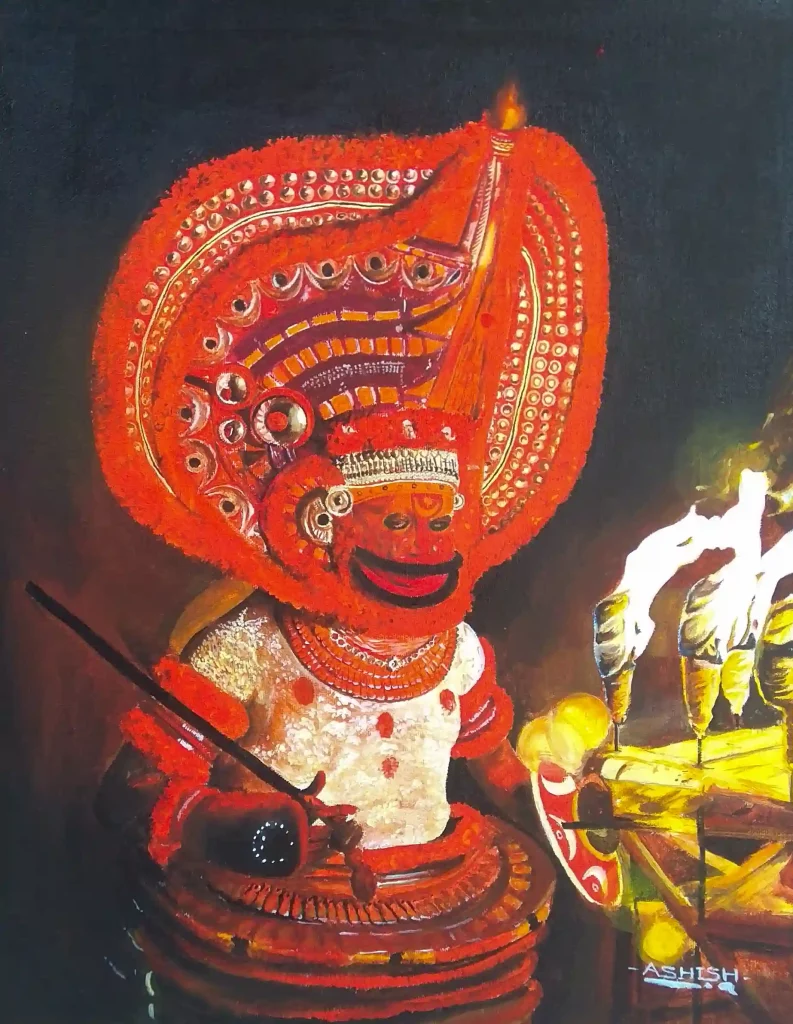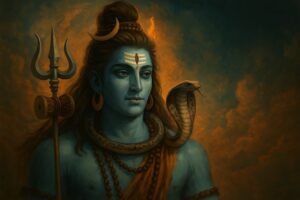Table of Contents
ToggleKathivanoor Veeran
Kathivanoor Veeran, also known as Mandhappan holds a place, in the cultural heritage of the North Malabar region in Kerala, India. In Malayalam the name “Veeran” translates to “Hero” in English and this deity embodies the spirit of heroism within the folklore.
According to legend Kathivanoor Veeran is believed to be the manifestation of Mandappan Chekavar, a warrior from the Thiyya community. The myths and tales surrounding Mandappan life and eventual deification continue to thrive through traditions and folklore in the Kolathunadu region.
One remarkable aspect of this tradition is its expression through an art form called “theyyam.” Devotees participate in theyyam rituals held at temples in Kannur and Kasaragod districts that bring alive the legend of Kathivanoor Veeran. These rituals involve costumes, makeup and performances that create a captivating experience for both participants and onlookers.
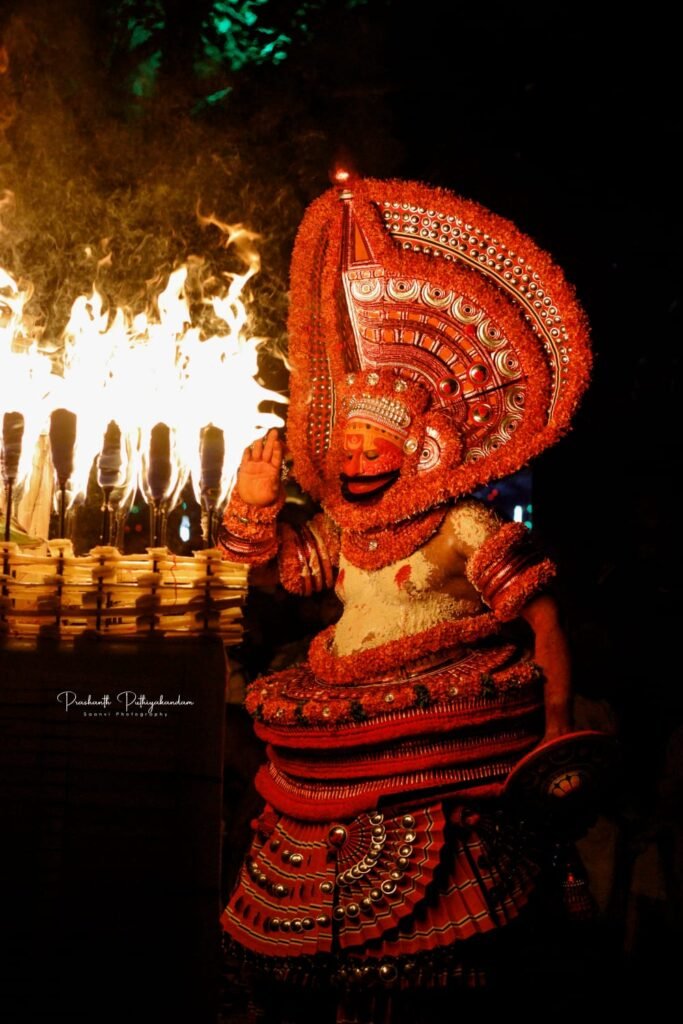
Kathivanoor Veeran Theyyam is renowned as one of North Malabar’s theyyams attracting people from distant places who seek to witness its cultural richness and religious fervor associated with this deity. Enough Kathivanoor Veeran holds significance for women, in the North Malabar region.
Many women rely on the deity, in their prayers and rituals hoping to receive blessings for a husband’s health. This makes Kathivanoor Veeran a symbol of hope and inspiration within the community. In essence, Kathivanoor Veeran embodies the link between mythology, tradition and spirituality in the North Malabar region. It gives us a glimpse, into the heritage of Kerala.
kathivanoor Veeran Theyyam Story
Mandappan Chekavar, who later transformed into the deity Kathivanoor Veeran, was born to the rich landlords Kumarachan of Mangad Methaliyillam house and Chaki Amma of Parakayillam house. Legend has it that Mandappan, a resident of present-day Mangad in Kannur district, received the blessings of goddess Chuzali at birth. He possessed remarkable martial arts skills and aspired to become a warrior. Instead of pursuing traditional employment, he and his friends engaged in hunting deer and quail in the woods. Although Kumarachan opposed providing rice and milk to his non-working son, Mother Chaki secretly supplied rice to support her beloved child. The naughty nature of Mannappan leads him to be a headache for the family. One day Mannappan was forced to be ousted from his home.
Feeling very sad about this, Mandappan decides to leave his home and joins his friends who are going to the Kodagu Hills for business. They give him alcohol and then leave without him. When he wakes up from his drunken state, Mandappan is all alone. Yet, he finds his way to his uncle’s house in Kathivanoor, where he starts living. As time passes, he inherits half of his uncle’s property. Obeying his aunt’s advice, he begins an oil business and, during this time, he meets and marries Velarkot Chemmarathi.
Mandappan and his wife had frequent arguments because he would often return home late. Then, on one unfortunate day, during a heated argument, she cursed him for his tardiness. When Mandappan learned that an army from Kodagu was approaching to attack his village, he armed himself, paid his respects to the gods, and went off to battle. A fierce fight ensued with the Kodagu soldiers.
Mandappan won the battle, but on his way back home, he realized that he had lost his ring and little finger during the fight. His friends tried to stop him, advising him not to return to the battlefield alone, but he went back to retrieve his lost items. Unfortunately, the defeated fighters from Kodagu deceitfully killed Mandappan when he returned. Meanwhile, Chemmarathi, waiting for Mandappan, saw the ring and little finger fall onto a banana leaf. Overwhelmed by grief, she committed suicide by jumping into Mandappan’s funeral pyre.
Mannappan’s relatives had a dream that led them to believe Mannappan and Chemmarathy were divine beings. Because of this, a traditional art form called Theyyam was performed in their honour, and it was named “Kathivanoor Veeran.” This Theyyam is known for its impressive physical and acrobatic performances. It usually takes place at night or in the early morning. The performance area is decorated with a unique platform called “Chemmarathy Thara,” and banana plant stems are used for decorations. During the Vellattom ritual of Kathivanoor Veeran Theyyam, various Kalari (martial art) movements and steps are displayed. This is the historical background of Kathivanoor Veeran Theyyam.
Kathivanoor Veeran Theyyam
Kathivanur Veeran Theyyam is known for its energetic movements and flexibility. It’s usually performed at night or very early in the morning. The special performance area for Kathivanoor Veeran Theyyam is made using banana stems, colourful dyes, and fiery sticks, and it’s called “Chemmarathi Thara,” symbolizing his wife Chemmarathi. The sixty-four cells represent the idea that Kathivanur Veeran’s body was dismembered into sixty-four pieces during the Kodakars’ treachery. The face painting of Theyyam is called “Nakam Thazhthi Ezhuthu,” and it includes beards and moustaches.
Many girls in the North Malabar region continue to worship Kathivanoor Veeran in hopes of finding a healthy husband. A Kathivannur Veeran Theyyam performer should be knowledgeable in various subjects. Visitors are allowed to ask the Theyyam performer questions, and the performer is expected to provide accurate answers.
kathivanoor Veeran Theyyam Photos
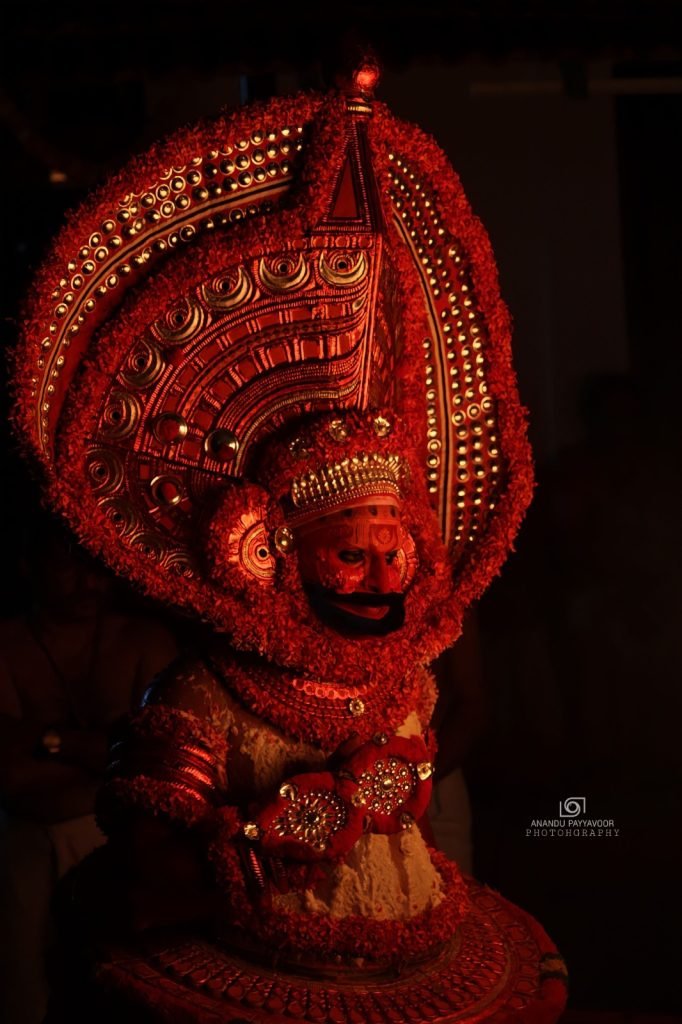

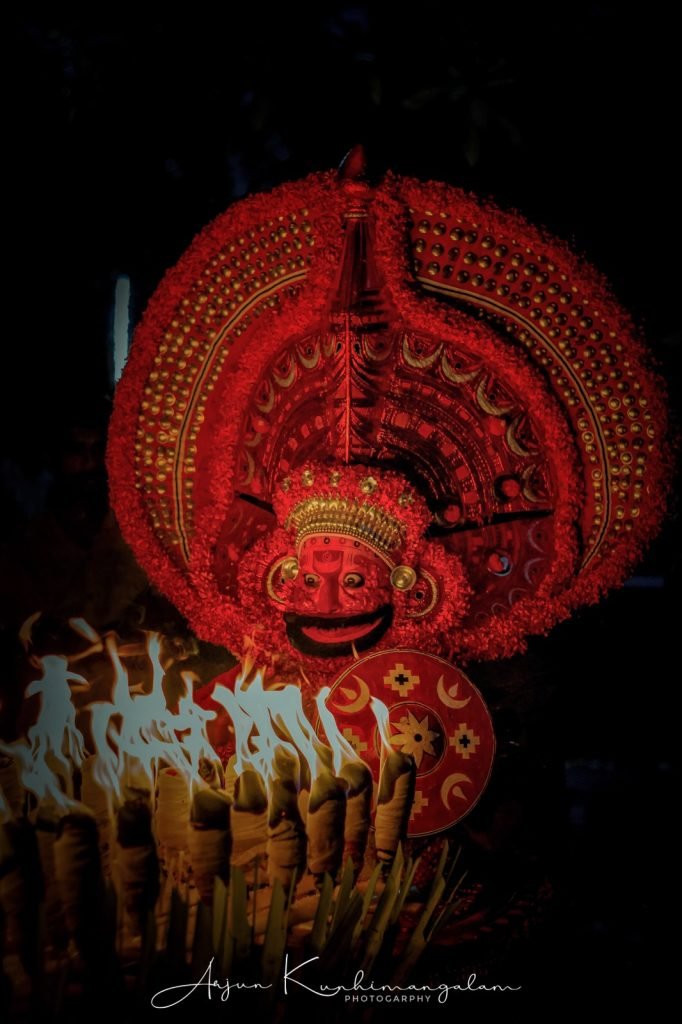
Conclusion
The Theyyam rituals are deeply rooted in the local culture and traditions of Kerala and are an integral part of religious and social life in the region. Each Theyyam deity has its own unique characteristics, myths, and significance in the local folklore.
It’s worth noting that the specifics of Theyyam rituals, including the portrayal of Kathivanoor Veeran, can vary from one performance to another and from one region to another within Kerala. These rituals are often performed during the Theyyam season, which typically occurs from October to May.
Kathivanoor Veeran Theyyam, like other Theyyam deities, is an important cultural and religious symbol in the state of Kerala, and witnessing a Theyyam performance is a unique and captivating experience for both locals and tourists interested in Kerala’s rich cultural heritage.
For more in-depth information on Kerala’s culture and Theyyam, you can visit the Hidden Mantra website’s blogs.
